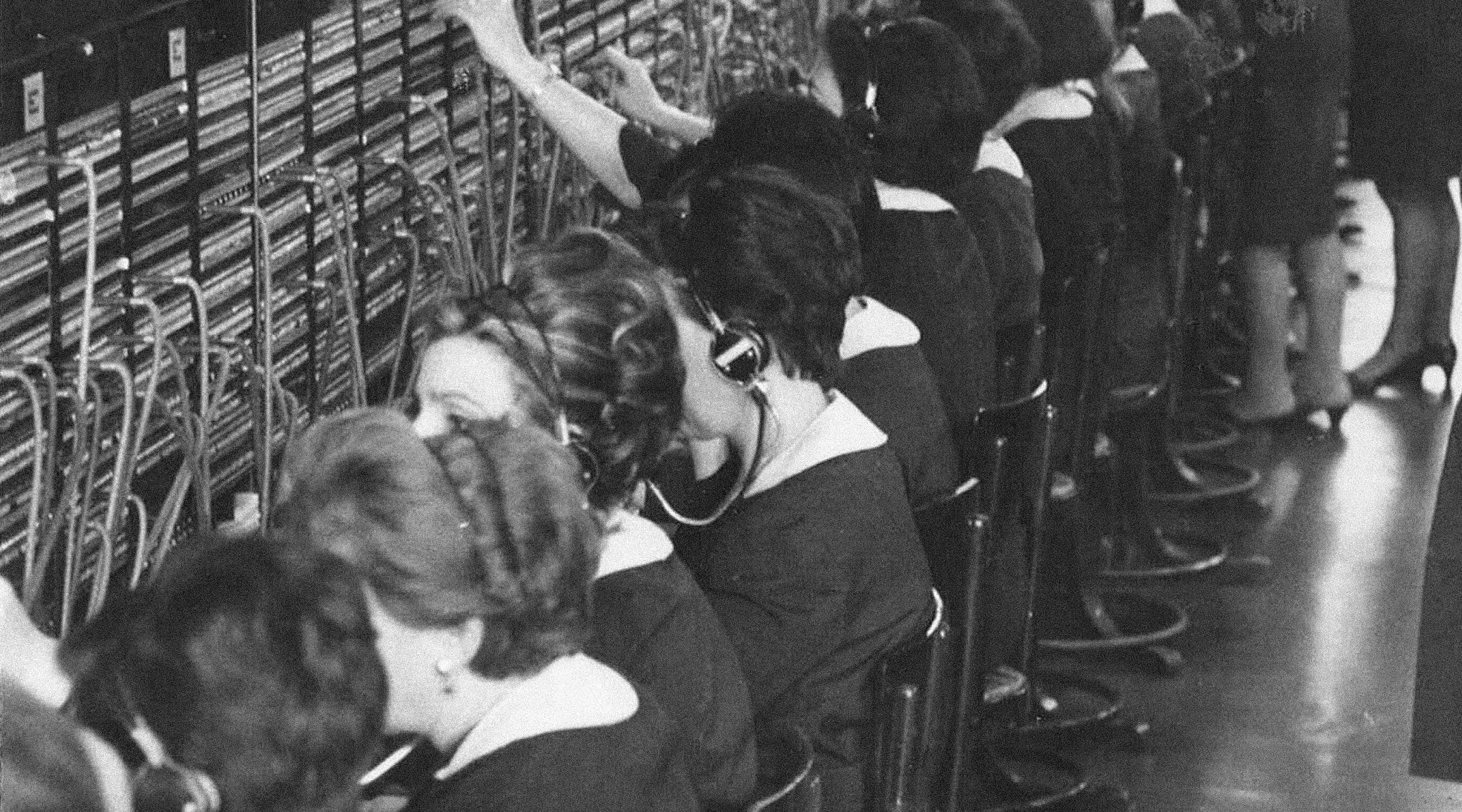
1964
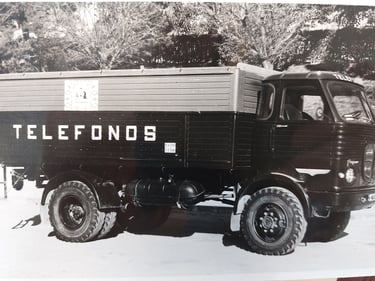
The race to lighten the thousands of installations that accumulate on waiting lists has become a real obsession for Telefónica. Every year a new record number of registrations is set.
Higher than ever
01
Telefónica continues to make progress in the deployment of infrastructures with the commissioning of a major radio link between Madrid and Valencia of 344 kilometres with capacity for 960 circuits. Meanwhile, the number of new handsets installed continues to grow. The year ended with 240,000 new lines, surpassing 1963, which had already been the year with the highest number of new lines in the history of CTNE. However, as the company acknowledges in its annual report with a touch of bitterness, this growth in registrations is only adding to the already long waiting lists. From 317,000 lines pending installation to 430,000, without the company being able to meet so much demand in a timely manner, despite the more than 3,500 jobs created that same year to reinforce the workforce.
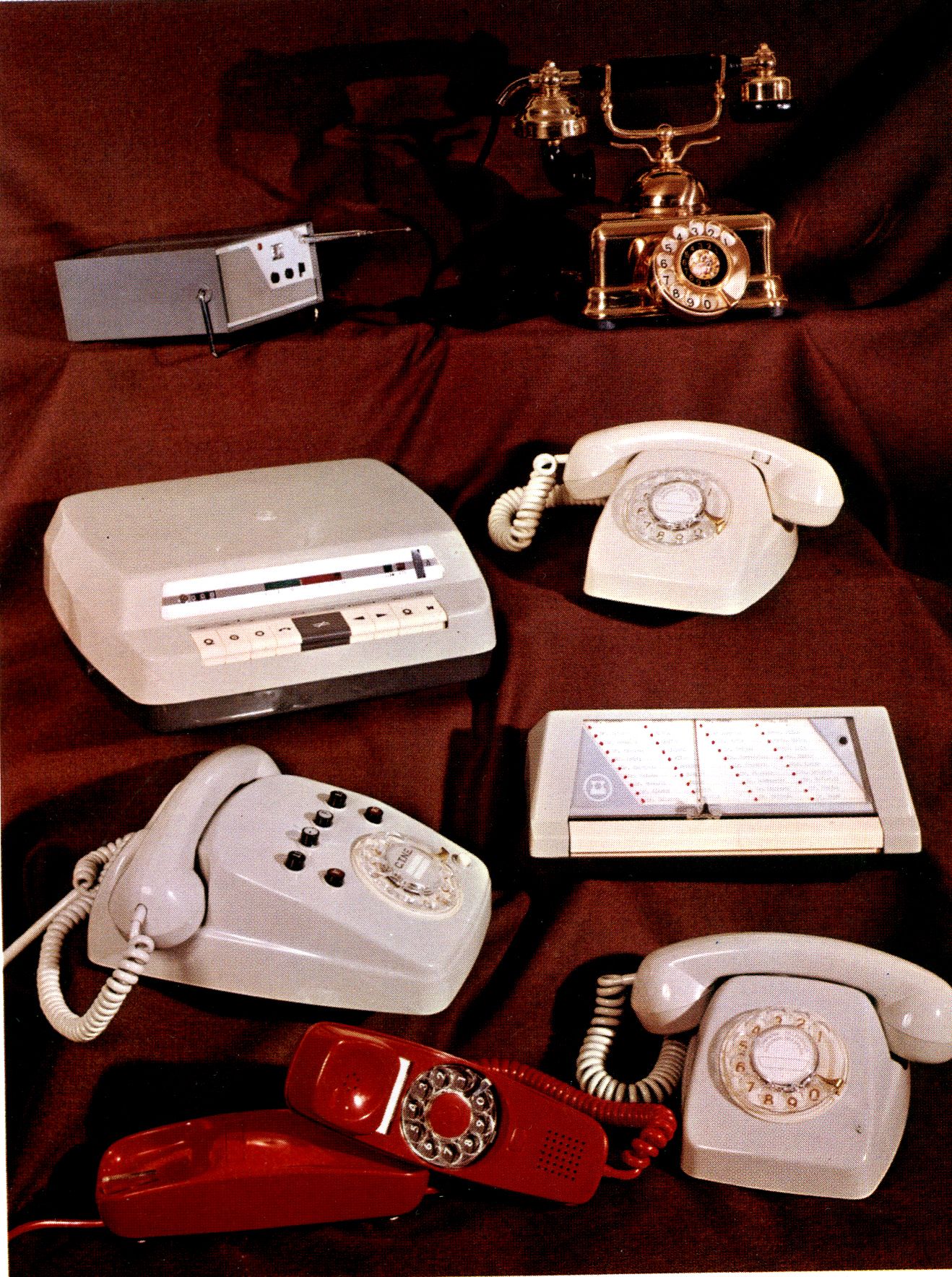
Longer numbers for Seville
02
The growth of lines required more and more infrastructure and also new exchanges, especially in the provincial capitals. In February 1964 it was Seville's turn to have six-digit numbers, all starting with 2. This was explained in detail on the poster designed to warn the residents of the Andalusian capital of this new development. The city is going to have new automatic exchanges and before that happens it is essential to lengthen the numbers to ensure that there are as many telephones as demand requires.
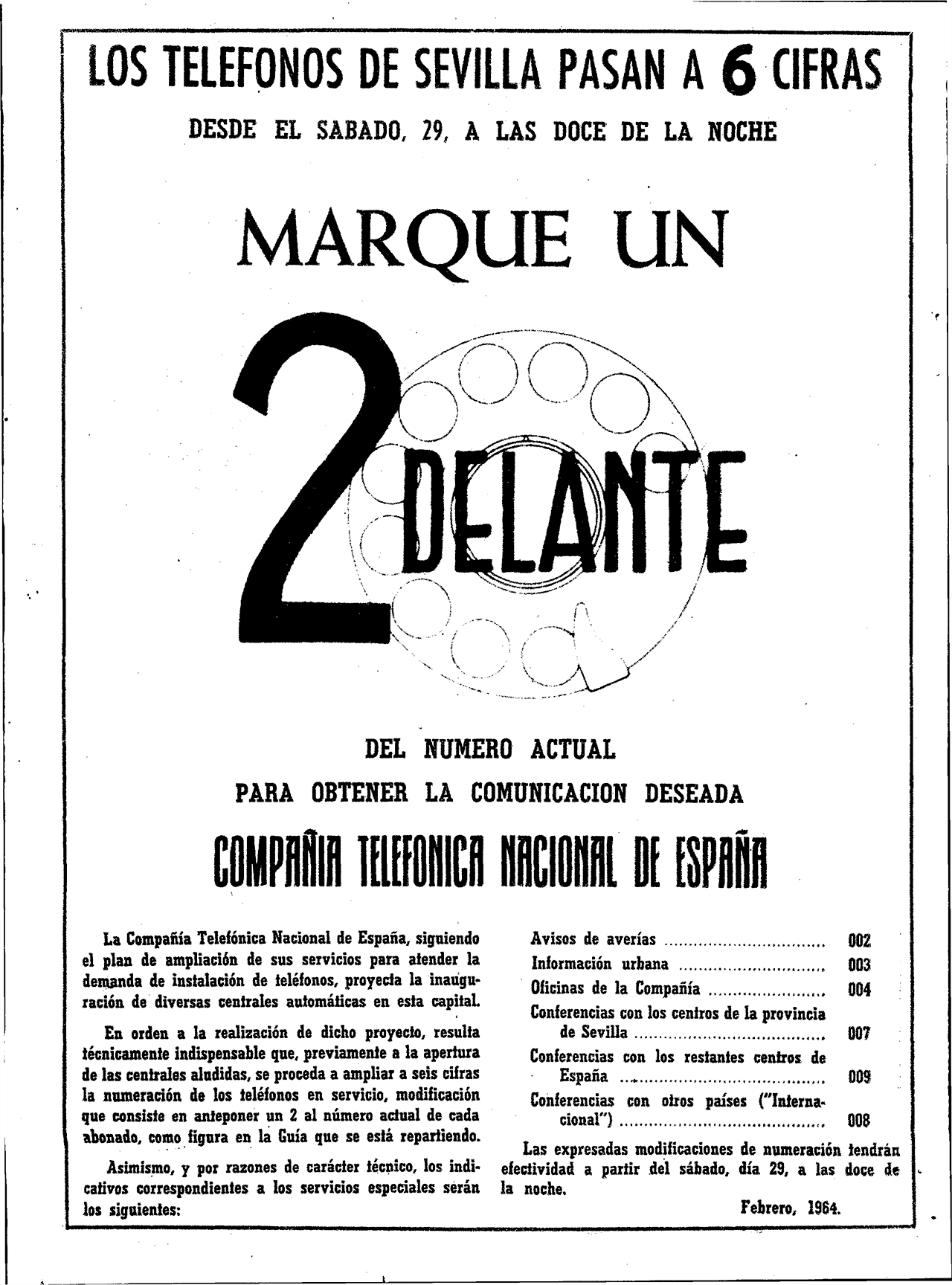
Modern exchanges in historic locations
03
Beyond their own technological utility as providers of telephone service, which was increasingly in demand, the proliferation of new exchanges changed the face of the streets or neighbourhoods where they were located. In the mid-1960s, when new exchanges were opening almost every month, cities received them with unequal joy. In the case of Madrid, the Moscardó and Campamento power stations were opened at this time, both of which were industrial in style and located in areas that were still not very urbanised. However, in other cases, such as in the city of Ponferrada in Leon, the telephone exchange was too modern for the surroundings where it was located, the site of the church of San Pedro, which initially caused some rejection among the local residents.
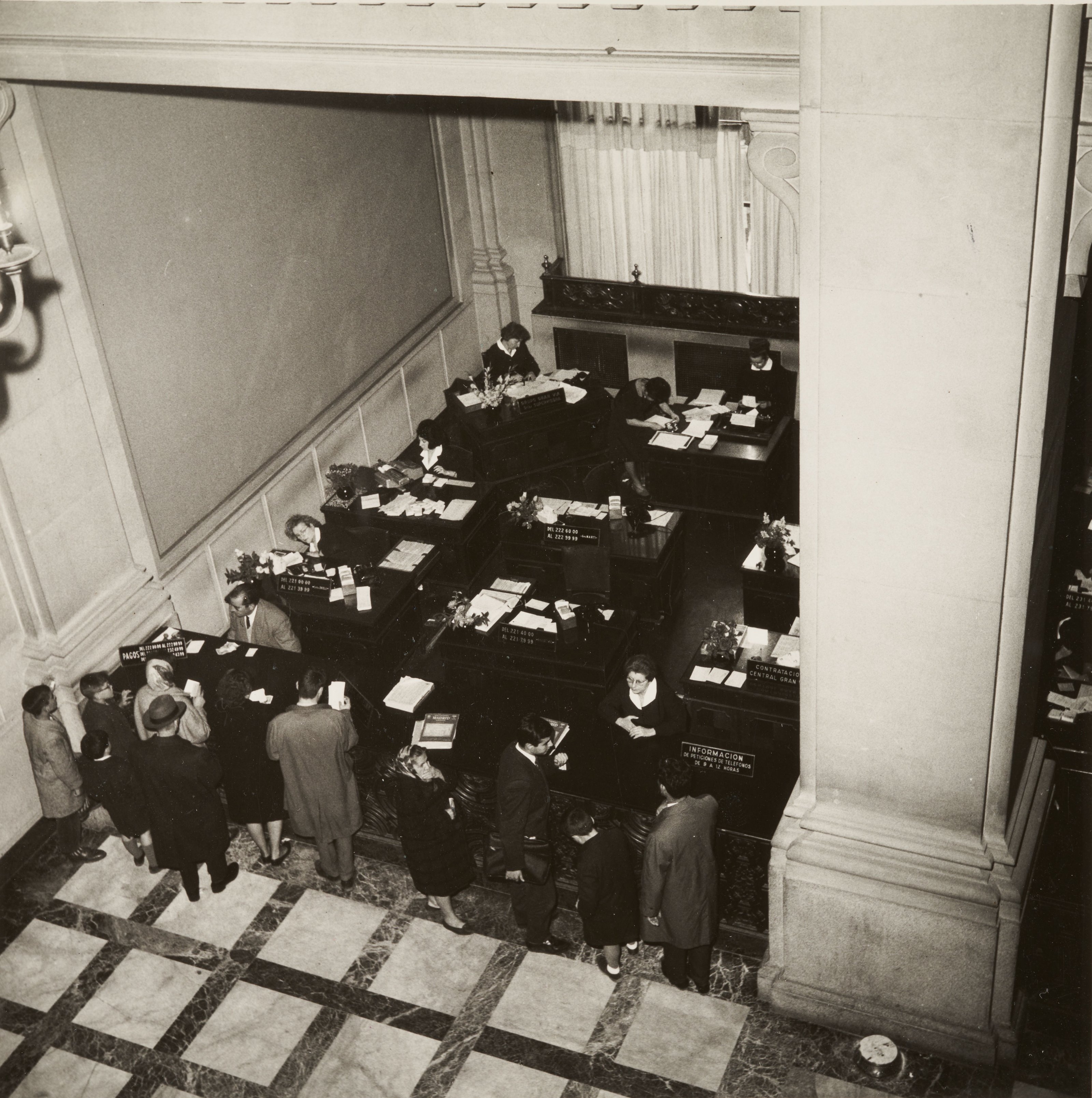
Do you have doubts about what happened?
Ask Aura